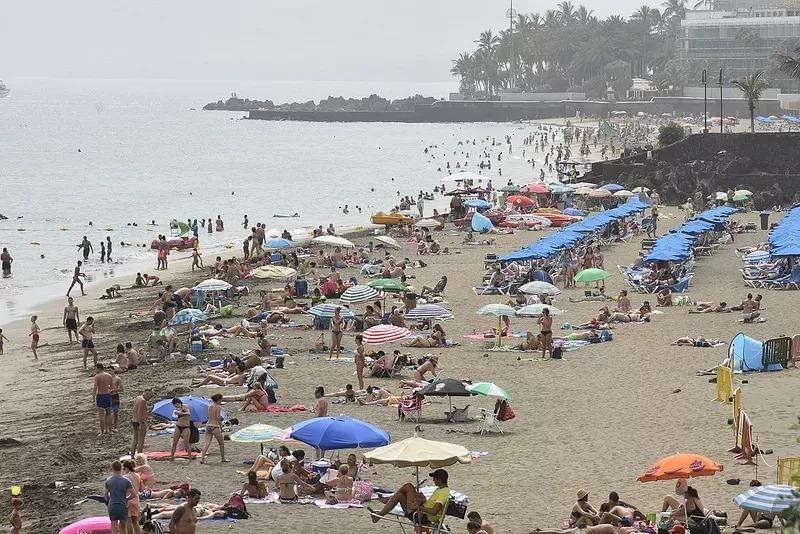THAKS TO DIGITAL LANCELOT
The first heat wave of the recently launched summer arrives and the thermometers will begin to rise as the week progresses. The AEMET has activated the yellow notice for Monday and Tuesday, and the Government of the Canary Islands pre-alerts it until this Monday the temperatures are reviewed again. For this Sunday, the forecast already warned of the entry of light haze in the afternoon in Lanzarote and temperatures above 30 degrees. The maximum temperatures will exceed 36ºC as of Monday in the interior and south of the easternmost islands and the worst day will be Wednesday.
Faced with this panorama, the Ministry of Health of the Government of the Canary Islands, through the General Directorate of Public Health, activates the Preventive Action Plan for the Effects of Excess Temperatures on Health.
This is a series of necessary measures to reduce the effects on people’s health associated with excessive temperatures and to coordinate the Canary Islands institutions involved, activating the health care system for emergencies in the Archipelago, in coordination with the Ministry of Health. , Social Services and Equality and the State Meteorological Agency (AEMET).
The General Directorate of Public Health establishes through the Plan of Preventive Actions for Heat an epidemiological surveillance system of the impact of high temperatures on the health of the population in coordination with the care and emergency centers of the Canary Islands.
Likewise, Public Health will provide information to the media aimed at providing useful advice and practical measures to prevent the effects of exposure to high temperatures.
Recommendations to beat the heat
This Preventive Actions plan aims to increase the individual prevention capacity to face the heat by applying measures that are easy and accessible. The plan is intended for the entire population, it is specially designed for the most vulnerable population groups, such as the elderly, children and people with chronic pathologies.
Vulnerability to high temperatures includes personal risk factors, such as age over 65, as well as environmental, local, and occupational risk factors, among others. Below are some recommendations aimed at the vulnerable population:
Stay as long as possible in cool, shaded or heated places, and refresh yourself whenever you need to.
Reduce physical activity and avoid practicing outdoor sports in the central hours of the day.
Drink water or liquids frequently, even if you don’t feel thirsty and regardless of the physical activity you do.
Avoid drinks with caffeine, alcohol…





